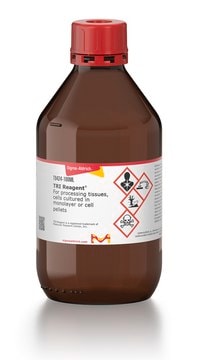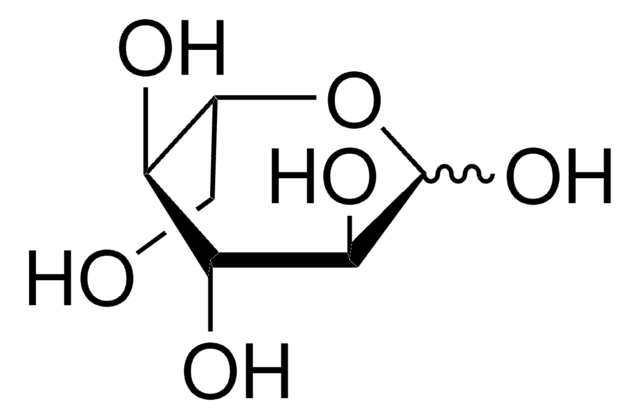G8644
D-(+)-glucosio
100 g/L in H2O, sterile-filtered, BioXtra, suitable for cell culture
Sinonimo/i:
D-Glucopyranose
About This Item
Prodotti consigliati
Sterilità
sterile-filtered
Livello qualitativo
Nome Commerciale
BioXtra
Stato
solution
Concentrazione
100 g/L in H2O
tecniche
cell culture | mammalian: suitable
Impurezze
endotoxin, tested
Temperatura di conservazione
room temp
Stringa SMILE
OC[C@H]1O[C@H](O)[C@H](O)[C@@H](O)[C@@H]1O
InChI
1S/C6H12O6/c7-1-2-3(8)4(9)5(10)6(11)12-2/h2-11H,1H2/t2-,3-,4+,5-,6+/m1/s1
WQZGKKKJIJFFOK-DVKNGEFBSA-N
Informazioni sul gene
human ... PYGM(5837)
Cerchi prodotti simili? Visita Guida al confronto tra prodotti
Descrizione generale
Applicazioni
- to determine extracellular acidification rate (ECAR) or oxygen consumption rate (OCR) in human CB CD34+cells by Seahorse extracellular flux assay
- as a negative control in human umbilical vein endothelial cell (HUVEC) culture
- as a supplement for culturing colonic biopsies
Azioni biochim/fisiol
Altre note
This solution has been sterilized by filtration.
Codice della classe di stoccaggio
12 - Non Combustible Liquids
Classe di pericolosità dell'acqua (WGK)
nwg
Punto d’infiammabilità (°F)
Not applicable
Punto d’infiammabilità (°C)
Not applicable
Scegli una delle versioni più recenti:
Possiedi già questo prodotto?
I documenti relativi ai prodotti acquistati recentemente sono disponibili nell’Archivio dei documenti.
I clienti hanno visto anche
Il team dei nostri ricercatori vanta grande esperienza in tutte le aree della ricerca quali Life Science, scienza dei materiali, sintesi chimica, cromatografia, discipline analitiche, ecc..
Contatta l'Assistenza Tecnica.







